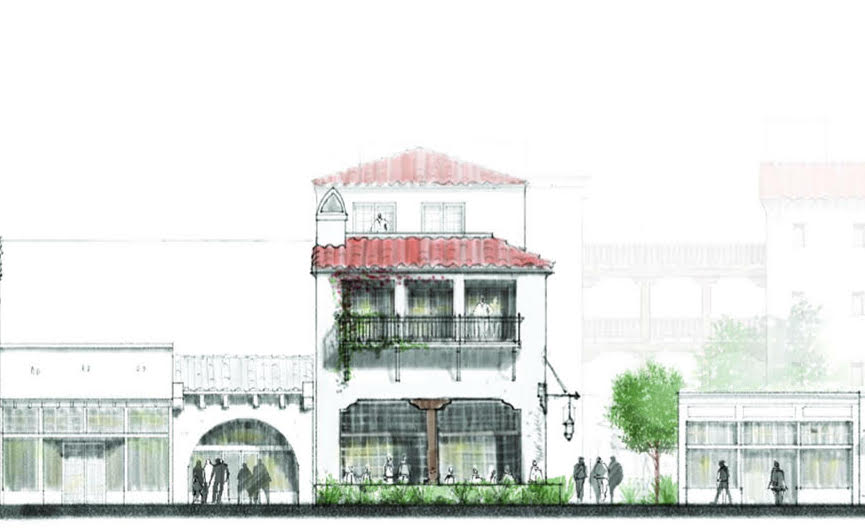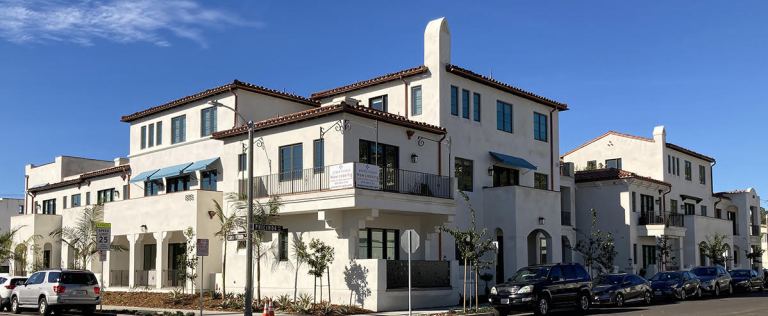Housing vs. Heights
Santa Barbara's Essence Is Fragile and Needs Protection

Discussion about height limits downtown indicate belief by some that without additional incentives, such as increased heights, developers will not build housing downtown. I’d like to share with you information on projects that have been built, are under construction or are approved that show that housing projects have been, are being and will be built even within the 45-foot limit.
Since the adoption of the AUD (Average Unit-size Density) high priority ordinance, which allows up to 63 dwelling units (du) per acre, 757 AUD high priority, high density units have been built, are under construction, or are pending. Of these, 639 of those units are in buildings that are 45 feet tall or less. Despite architects’ complaints, there doesn’t seem to be any real problem designing within the 45-foot height limit.
Two of these projects don’t even go up to 45 feet although the density is as much as 63 du/acre, the maximum allowed. At 604 East Cota Street, the project is 62 du/acre and 43’2” high. Casa Anatega, 634 Anacapa Street, is 63 du/acre and 40 feet high.
The Santa Barbara City Housing Authority is always extremely careful to build projects that are compatible with their neighborhood and community. It was the Housing Authority project below, Casa de las Fuentes, that gave me the idea for what became the AUD high priority overlay test program. It is 57 du/acre and is 35 feet high. High density projects that fit within the community can be and are being done well.

An exception is the Sanctuary Centers project at 115 West Anapamu. It was approved for up to 60 feet on a unanimous Planning Commission vote because it is truly a community benefit project. The first two floors will have medical, dental, and mental-health clinics for the residents and for others that Sanctuary Centers serves. The three floors above will have apartments for people living with mental-health issues and for veterans. The units are 100 percent low income
Affordable.
In addition to being an AUD high priority overlay project, it received a bonus density allowance, bringing the density to 108 du/acre. While it is a very large building, the project is in the center of the block, and, except for a view down the driveway from Anapamu and across the Garden Court parking lot from De la Vina, the building will not be visible from street level because of the existing buildings that will surround it.

There is another AUD high priority overlay project that has been approved by the Planning Commission at 710 State Street (Restoration Hardware) that is beautifully designed. Lots have been combined along State and with a lot that fronts on Ortega (The Press Room). Thoughtfully designed and within a 48-foot height, there are generous common open yard areas and almost every unit has some private open yard. Set back from State Street and stepped up to a third floor on the State Street frontage and with the four-story element on the lot fronting on Ortega, the tallest part is far enough back from State Street to allow some sense of openness to remain. It is 52 du/acre and comes under the inclusionary ordinance. Four of the units will be middle income affordable. Again, greater height is not needed.

Under the current ordinance nothing further could be built on the properties to the left of 710 State, leaving an opening toward the mountains, helping preserve Santa Barbara’s small town feel.
Yet another project is in the approval process at 410 State Street for 82 du to be built on the former Staple’s parking lot.
There is concern about projects that repeatedly come back to the design review boards. As Planning Commission liaison to the Historic Landmarks Committee and alternate to Architectural Board of Review, I keep an eye on the projects coming before these boards. Some projects do come back again and again, but not necessarily because of a problem with the boards. Some architects seem to listen to what the board members say, then ignore it. Those who respond to board comments or come in with good designs to start with, move through the process without delay.
Some say that if more tall buildings are built, people will in time not notice them. That is true. They also won’t remember what they have lost — a sense of openness, the small town feel that residents love, and the possibility of seeing the mountains from downtown. Developers are building housing within the 45-foot height limit. (It is now 48 feet in the AUD high density overlay area within the Central Business District).
Please note that most buildings along downtown State Street are one or at most two story. This low density development is part of Santa Barbara’s charm. It is part of what attracts tourists. Visitors don’t come to see what they can see at home. Crowd downtown with tall buildings, and its appeal will diminish.
In addition the public does not favor tall buildings. Here are the results of the Santa Barbara American Institute of Architects’ survey:

Almost 54 percent of those who answered the question (4,454) think that three stories is quite
enough. Another 29 percent find four stories acceptable. A total of 83 percent want no more than four stories.
There is a need for housing for families. The projects that have been built or are proposed generally have some two-bedroom units; almost none have three bedrooms. The rents in Casa Anatega (634 Anacapa St.) range from $2,900 for a studio without one square inch of closet space to $5,200 for a two-bedroom, two-bath unit. There is little that seems suitable for families.
835 East Canon Perdido was recently completed. It has 41 du at 51 du/acre and is 45 feet high. Rents range from $2,250 for a 477 sq. ft. studio to $3,950 for a 863 sq. ft two-bedroom, two-bath unit.

Please note that most of these projects are not at maximum density, and they are still getting built and within 45 feet.
Remember that the more market-rate units that are built, the more need there is for middle income affordable units. New Santa Barbara residents generate a demand for services that are are generally low wage. This is the nexus that allowed the city to adopt an inclusionary ordinance. Even with the inclusionary requirement, few units of the kind needed will be built.
Much effort went into making Santa Barbara what it is. Its essence is fragile. Some refer to Santa Barbara as an “incredible city.” Please, help keep it that way.
Sheila Lodge has served on the city’s Planning Commission and City Council, and was mayor of Santa Barbara from 1981-1993.




You must be logged in to post a comment.